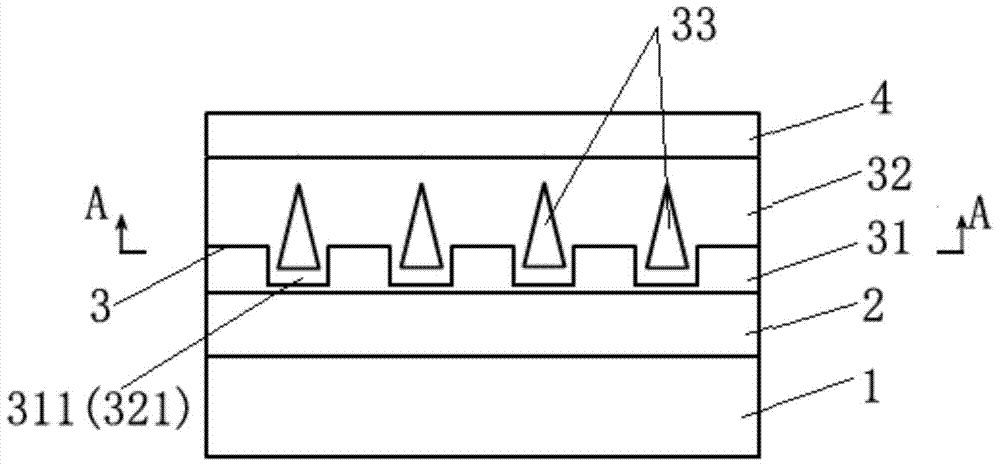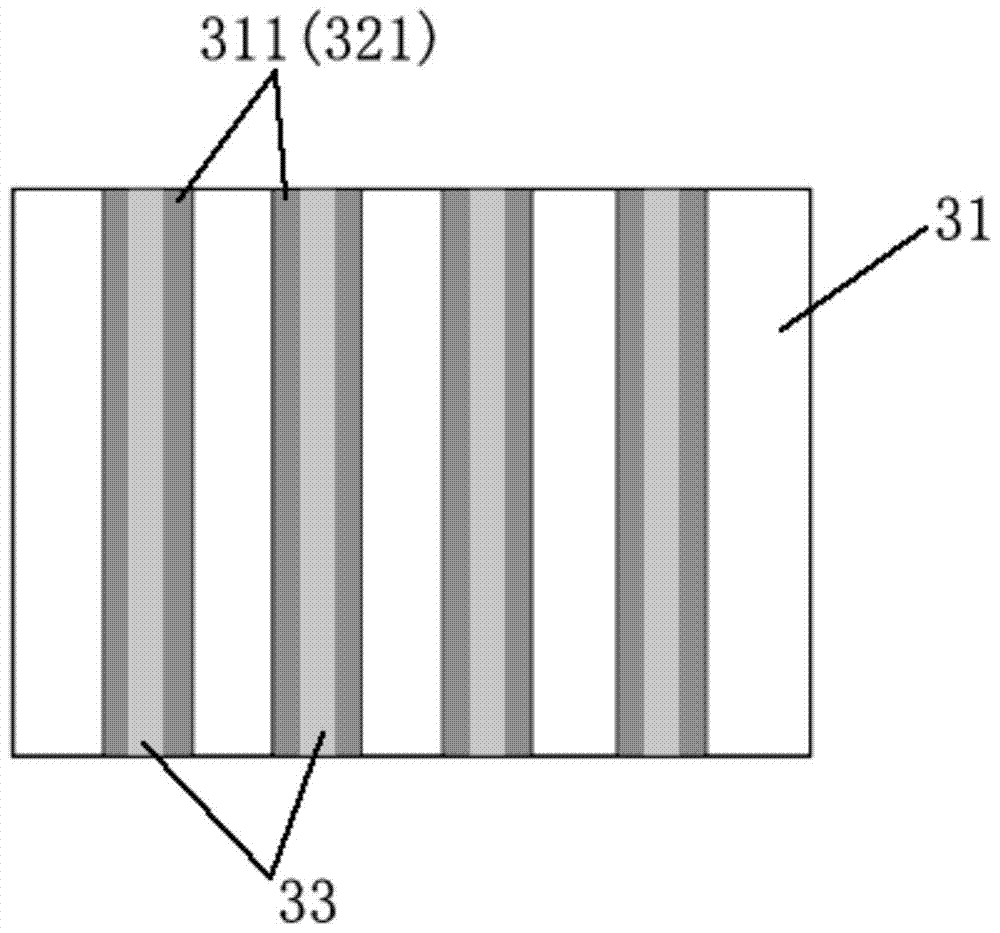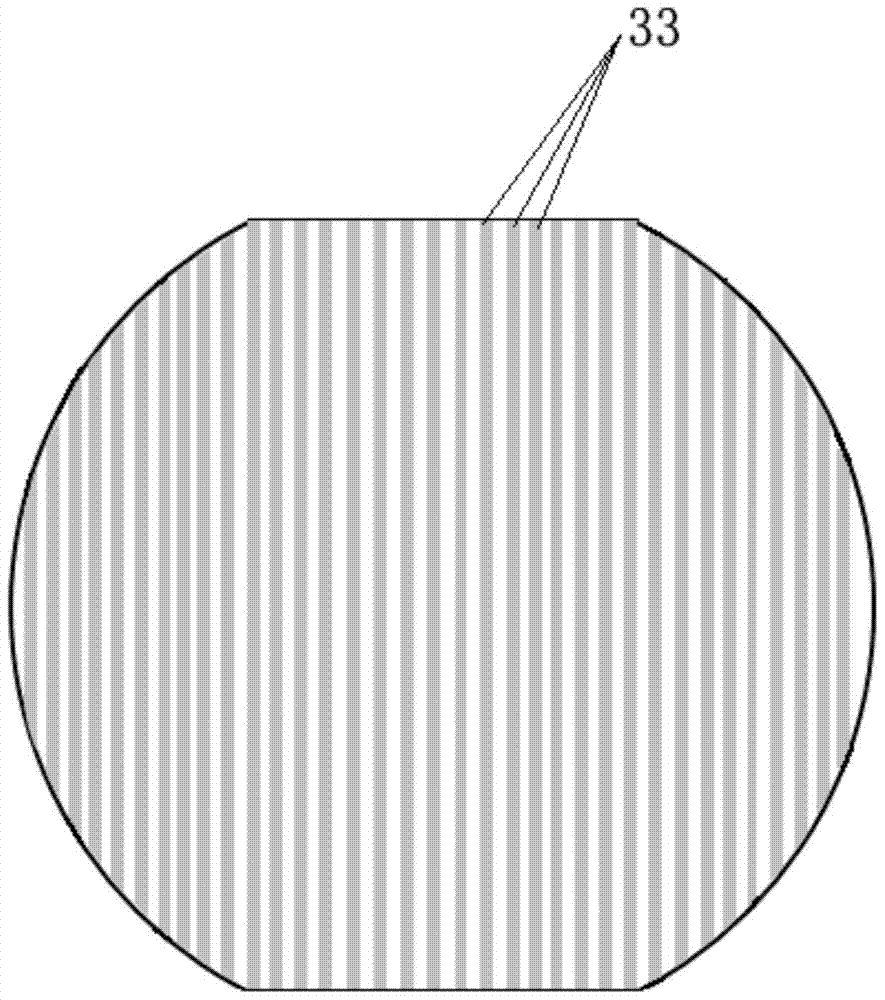Solar cell epitaxial wafer and its manufacturing method
A technology of solar cells and manufacturing methods, applied in the field of solar cells, can solve the problems of reducing the stripping speed and hindering the replenishment of acid solution, and achieve the effects of shortening the time, accelerating the corrosion speed, and reducing the corrosion time
- Summary
- Abstract
- Description
- Claims
- Application Information
AI Technical Summary
Problems solved by technology
Method used
Image
Examples
Embodiment 1
[0035] like figure 1 As shown, this embodiment provides a solar cell epitaxial wafer, including a substrate 1, a buffer layer 2, a sacrificial layer 3 and a solar cell layer 4 arranged in sequence, wherein the sacrificial layer 3 includes a first sacrificial layer 31 and a second sacrificial layer 31. Sacrificial layer 32, the first sacrificial layer 31 is arranged close to the buffer layer 2, the second sacrificial layer 32 is arranged close to the first sacrificial layer 31, a plurality of grooves 311 are distributed on the first sacrificial layer 31, and on the second sacrificial layer 32 There are a plurality of protrusions 321 that cooperate with the grooves 311, such as figure 2 As shown, the protrusion 321 has a gap 33 extending along the length direction of the groove 311 for allowing the etching solution to flow into the sacrificial layer 3 .
[0036] Specifically, the above-mentioned groove 311 may pass through the entire sacrificial layer 3 , or both ends of the g...
Embodiment 2
[0046] like Image 6 As shown, this embodiment provides a method for manufacturing a solar cell epitaxial wafer, for manufacturing the solar cell epitaxial wafer in the above-mentioned embodiment 1, comprising the following steps:
[0047] S1: growing the buffer layer 2 epitaxially on the substrate 1, specifically, metal organic compound chemical vapor phase epitaxy (MOCVD) can be used. The metal-organic compound chemical vapor phase epitaxy technology is currently the most mature epitaxial growth technology with the best effect in the manufacture of III-V compound solar cells. In addition, molecular beam epitaxy (MBE) with a slower growth rate can also be selected.
[0048] S2: Epitaxially grow the first sacrificial layer 31 on the buffer layer 2, such as Figure 7 As shown, specifically, metal organic compound chemical vapor phase epitaxy (MOCVD) can be used.
[0049] S3: Etch a plurality of grooves 311 on the first sacrificial layer 31, such as Figure 8 As shown, the gr...
PUM
 Login to View More
Login to View More Abstract
Description
Claims
Application Information
 Login to View More
Login to View More - R&D
- Intellectual Property
- Life Sciences
- Materials
- Tech Scout
- Unparalleled Data Quality
- Higher Quality Content
- 60% Fewer Hallucinations
Browse by: Latest US Patents, China's latest patents, Technical Efficacy Thesaurus, Application Domain, Technology Topic, Popular Technical Reports.
© 2025 PatSnap. All rights reserved.Legal|Privacy policy|Modern Slavery Act Transparency Statement|Sitemap|About US| Contact US: help@patsnap.com



